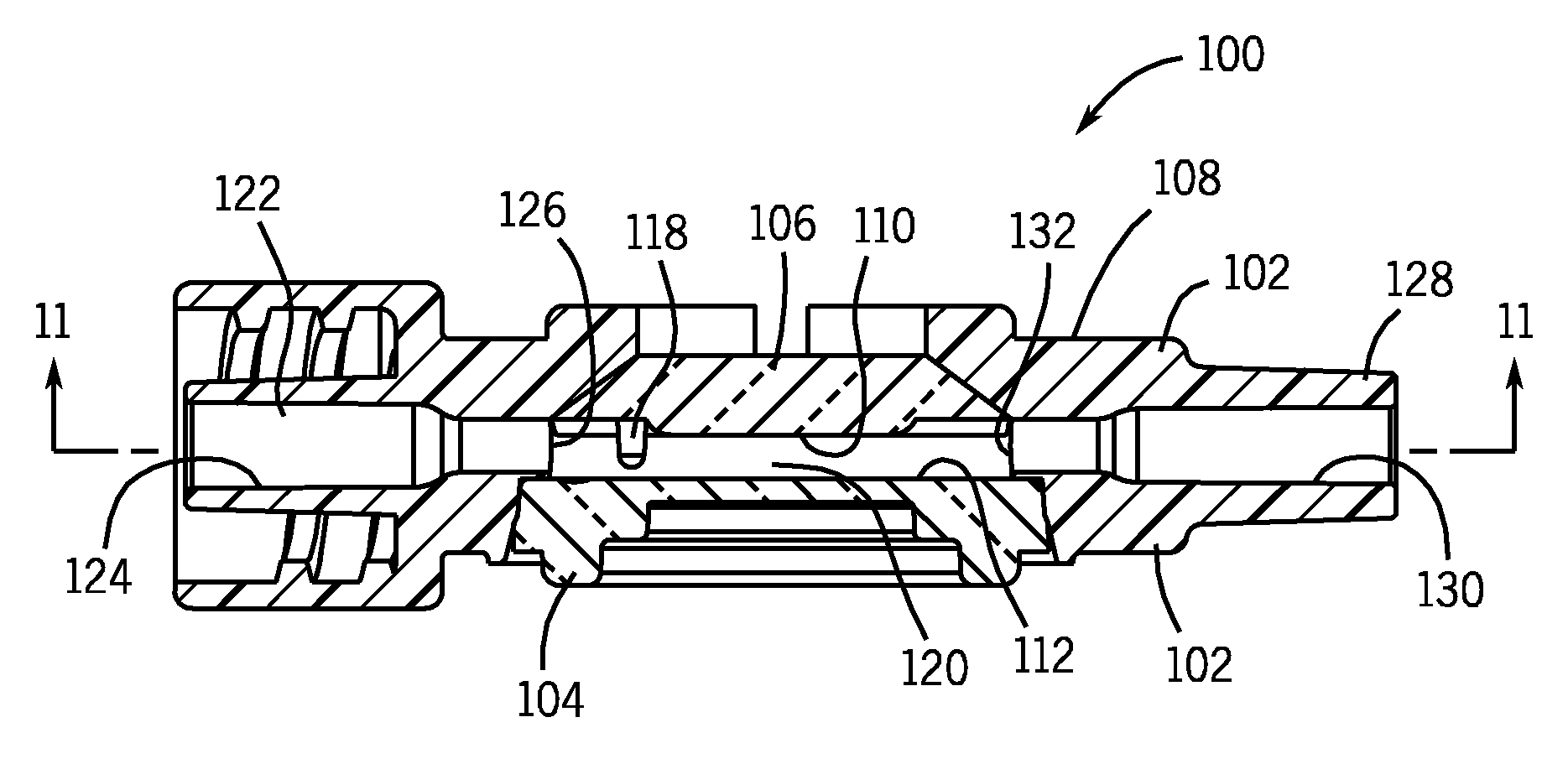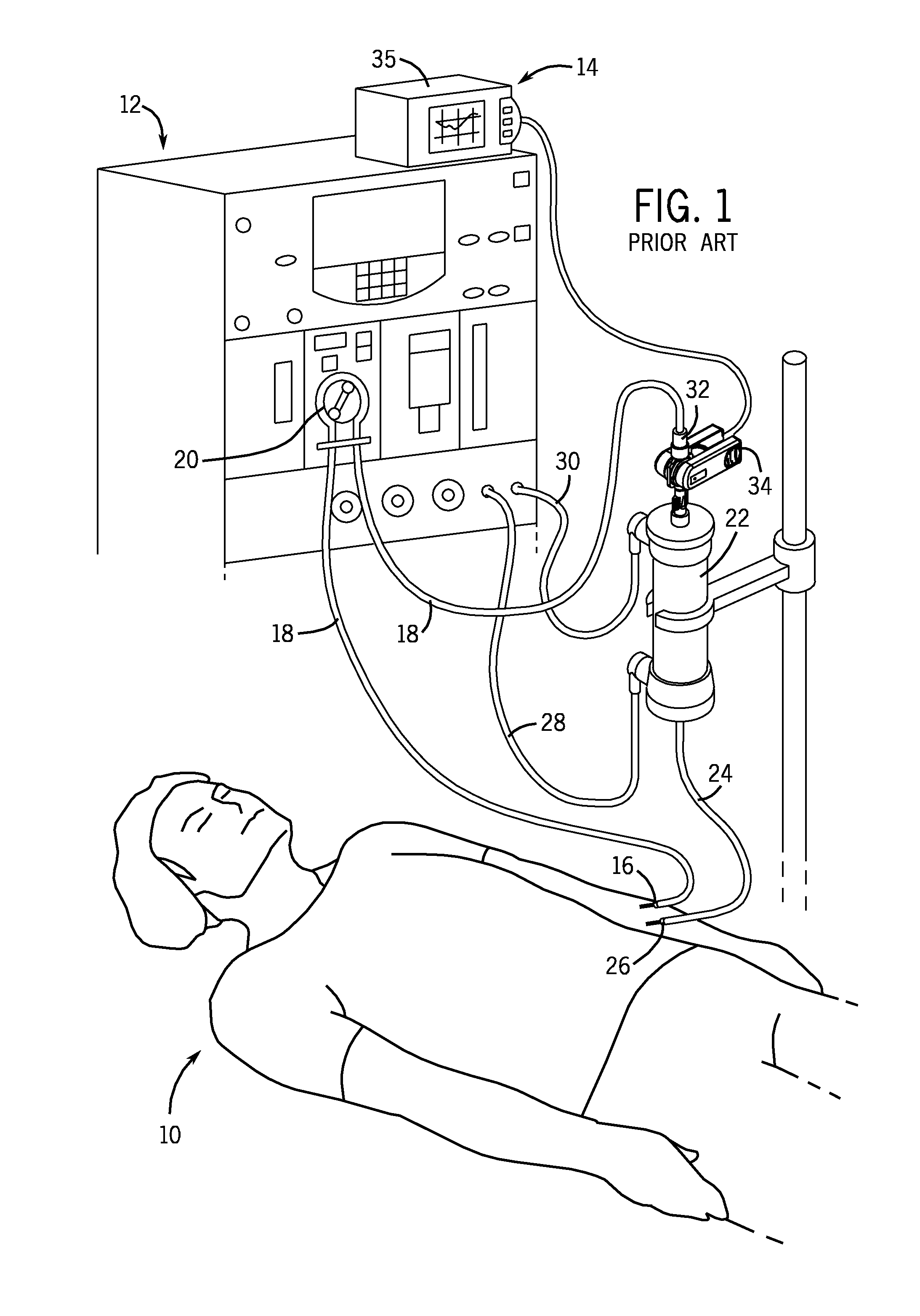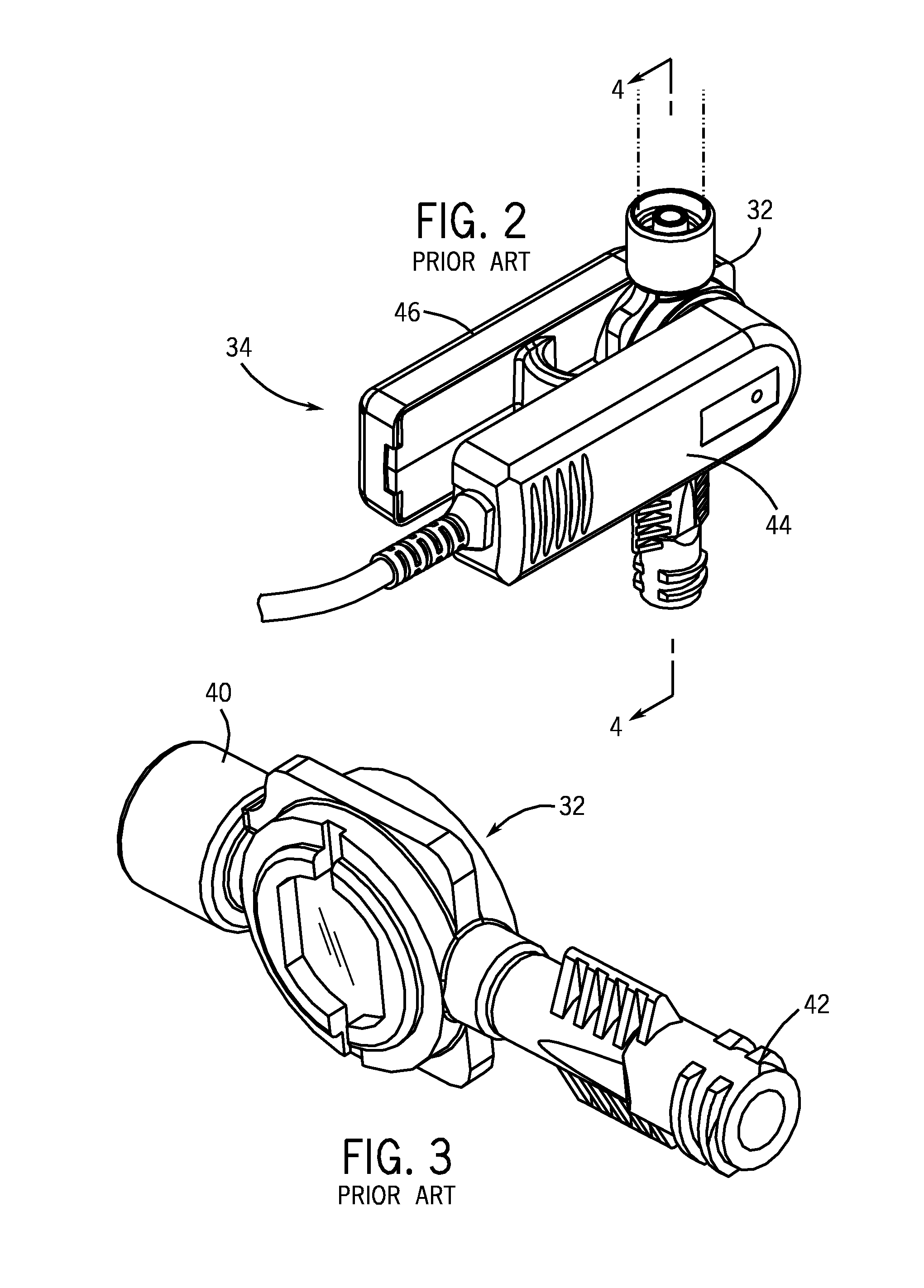Blood Chamber for an Optical Blood Monitoring System
a blood chamber and optical technology, applied in the field of optical blood monitoring systems, can solve the problems that the signal processing techniques do not adequately account for the effects of ambient light, and achieve the effect of facilitating the accurate measurement of oxygen saturation levels
- Summary
- Abstract
- Description
- Claims
- Application Information
AI Technical Summary
Benefits of technology
Problems solved by technology
Method used
Image
Examples
first embodiment
[0052]FIGS. 7 through 11 illustrate a blood chamber 100 in accordance with the invention. The blood chamber 100 is similar in many respects to the prior art blood chamber 32 shown in FIGS. 3 and 4; however, the blood chamber 100 has a chamber body 102 that includes a blue-tinted portion 108 in order to attenuate light ducting at the 660 nm wavelength. Referring in particular to FIG. 10, the lens 106 on the chamber body 102 is preferably made of clear, medical grade polycarbonate material which is molded with a polished finish in order to facilitate reliable light transmission, e.g. Bayer Makrolon FCR2458-55115 (no regrind allow), which is blood contact approved, USP XX11, Class V1. It is expected that the material be certified as to grade number, lot number and date of manufacture. No mold release should be used, and any lubrications should be food grade and not silicon based. The molded parts should be produced with no loose foreign material greater than 0.1 mm2 and no embedded for...
second embodiment
[0057]FIGS. 12 through 14 illustrate a blood chamber 200 constructed in accordance with the invention. Blood chamber 200 includes a moat 264 surrounding the internal blood flow cavity 220 as in the prior art blood flow chamber 32 illustrated in FIGS. 3 and 4. In fact, the structure and dimensions of the blood chamber 200 shown in FIGS. 12 through 14 are substantially the same as those shown in the prior art blood chamber 32, with the primary difference being that portion 208 of the blood chamber body 202 in FIGS. 12 through 14 is made of a blue-tinted material, such as dark blue tinted polycarbonate, in order to alternate ducted red light particularly at 660 nm if the LED emitter 88 emits red light at 660 nm. Because of the presence of the moat 264, ducting of the infrared radiation through the chamber body 202 (or ambient light) is even less likely to cause errors in the mathematics pertaining the ratiometric models for determining the real-time oxygen saturation and hematocrit lev...
PUM
 Login to View More
Login to View More Abstract
Description
Claims
Application Information
 Login to View More
Login to View More - R&D
- Intellectual Property
- Life Sciences
- Materials
- Tech Scout
- Unparalleled Data Quality
- Higher Quality Content
- 60% Fewer Hallucinations
Browse by: Latest US Patents, China's latest patents, Technical Efficacy Thesaurus, Application Domain, Technology Topic, Popular Technical Reports.
© 2025 PatSnap. All rights reserved.Legal|Privacy policy|Modern Slavery Act Transparency Statement|Sitemap|About US| Contact US: help@patsnap.com



